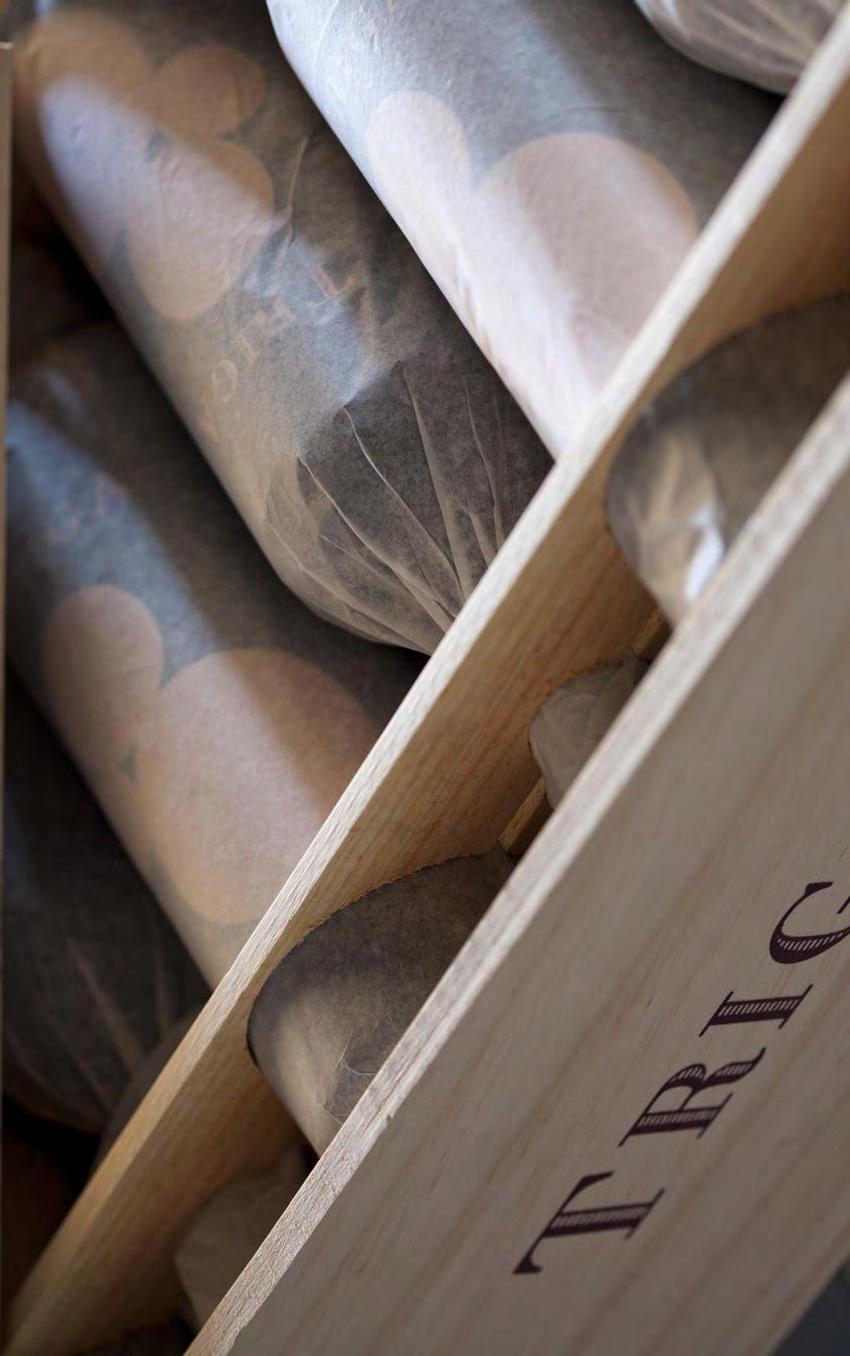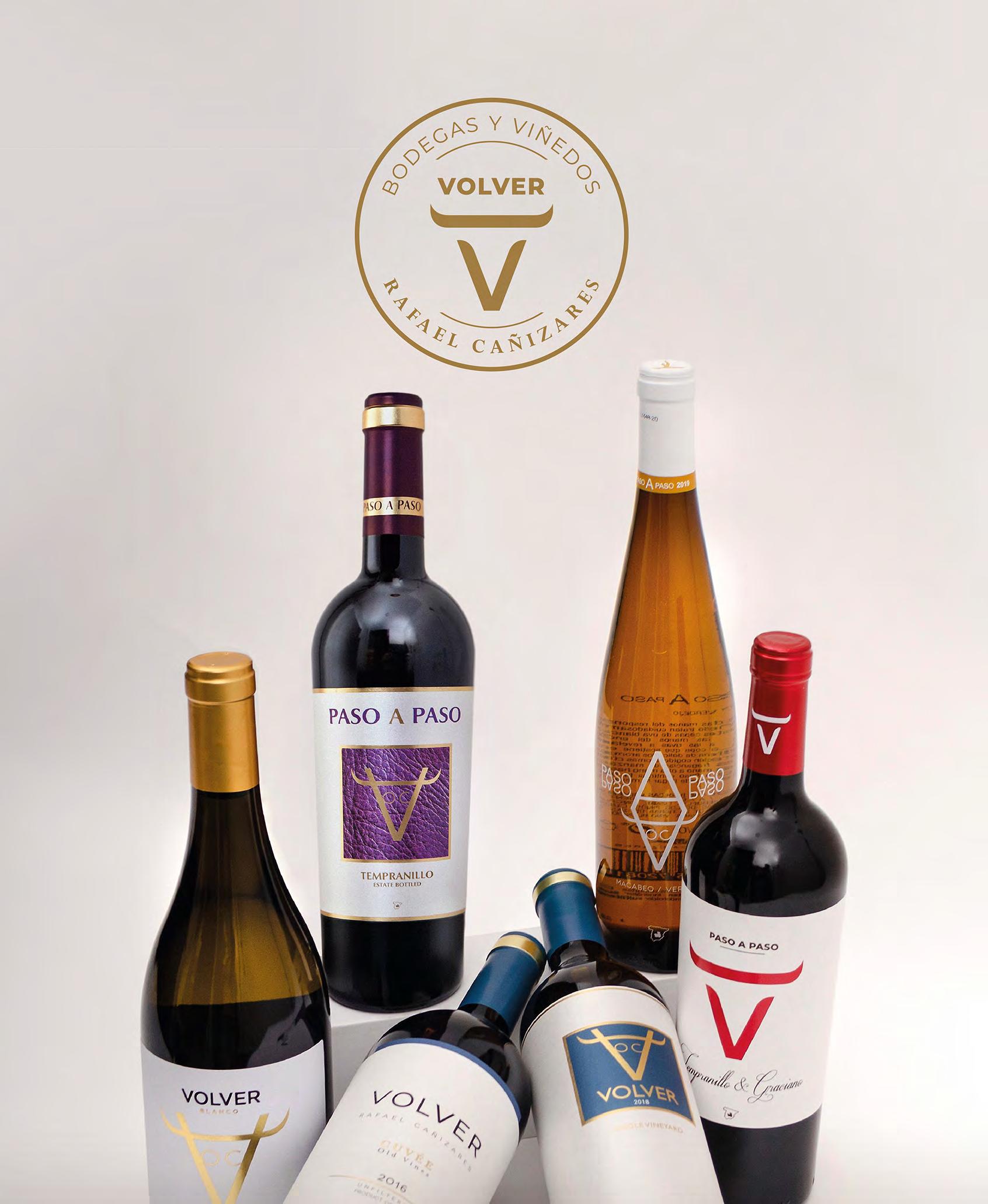
4 minute read
MONASTRELL, SPAIN’S GLOBETROTTING GRAPE
WORDS PHILIP HARRIS PHOTOGRAPHY COURTESY OF MONASTRELL
For years I laboured under the misapprehension that Monastrell was the Spanish equivalent of the French grape Mourvѐdre. Was it because my earliest encounters with it were French, or the fact that France enjoyed a dominant status not afforded to other countries? It should of course have been the other way around.
SCENE-SETTING
The first historical recording of Monastrell appeared in Spain about two centuries before it was taken to France. The grape also gives its name to a New World favourite – Mataro. Jancis Robinson MW wrote back in 1986 in Vines, Grapes and Wines that a definite link had yet to be established. Her 2012 book, Wine Grapes reveals its true history and that much has changed over 25 years. First mentioned in Catalonian Empordà in 1381, it is thought its name derives from Monastriellu, the diminutive for monastery. However, most of the vineyards surround the Levant regions of Jumilla, Yecla, Bullas, as well as Alicante. One thought is that it originated from Sagunto in Valencia, whose Catalan name is Camp de Mourvѐdre. From there it was introduced to France, namely Provence. Another is that it came from the Catalan town of Mataró, from where it was subsequently planted in the southern French region of Roussillon. Either way, one can see where the differing names spring from. The vine was introduced to Australia from Roussillon by James Busby in 1832 and was later planted in California in the 1860s as part of the Pellier Collection. In both countries it bears the name Mataro, although more recent offerings in California are now likely to be called Mourvѐdre.

BACKGROUND INFORMATION
Monastrell is a hardy varietal, not particularly fussy about soil, although it thrives on sand and limestone. Many of the Jumilla vineyards survived the dreaded phylloxera which ravaged Europe’s vineyards. If there is no clay in the soil, phylloxera can’t take hold, although a bout as late as 1988/9 hit some of Jumilla’s sites. It is quite resistant to many vineyard diseases and pests and is late-budding and ripening. However, its thick skin needs heat to achieve phenolic ripeness. This applies to the skin, as opposed to alcoholic ripeness which refers to the must. The problem is achieving balance – you need heat for the skin, but too much of it raises the must’s sugar content, thus causing high alcohol levels when fermented. Its juice is generally quite alcoholic and can be flabby, although growers are now harvesting earlier to retain its acidity and using cooler fermentation.

IT COULD HAVE BEEN A CONTENDER
Like its proud Spanish counterpart, Garnacha (and yes, that grape too existed before the French Grenache) its juice can be surprisingly pale before maceration (steeping). When comparing the two, Monastrell is blunter and capable of long ageing, but was deemed to be a workhorse grape. Conversely Garnacha/ Grenache was considered a thoroughbred. Therefore Monastrell was largely used in blends, applying its muscle to them. Other factors against Monastrell were a tendency to produce astringent or reductive wines and to throw a strop when grafted onto rootstock. Garnacha has neither of those problems. In the mid 80s, Monastrell was the most planted red variety after Garnacha. Strangely though, since its reputation has grown, its vineyard percentage has decreased and is now behind Tempranillo as well. That said, all of these varietals still lag behind the white Airén…

REDEMPTION
Chronic under-investment usually plagues more rustic regions than those which the market has chosen to favour. Sadly the costs of equipment don’t discriminate between the haves and have-nots, so it’s a brave enterprise that battles for a useful but solid grape in an unfancied region. Luckily Monastrell had some doughty standard bearers in the Castaño family in Jumilla and the La Purisima Co-operative in Yecla. Their work and dedication has led to the Murcian government establishing new rules back in 1995 encouraging wines under their autonomy to contain at least 85% Monastrell. Internationally, Domaine Tempier in Provence (fabulous Rosés), the Californian maverick Randall Grahm and the Australian Charles Melton have pushed Monastrell/Mourvѐdre/Mataro to the fore. The latter two with their Rhone influenced GSM blends – Grenache, Shiraz/ Syrah, Mataro. Look out for the Castaño label, as well as Estio and Iglesia Vieja from La Purisima, but many consider Juan Gil in Jumilla and Rafael Cañizares of Bodegas Volver in Alicante to be Monastrell’s newest heroes. Try the unoaked Honoro Vera and the Silver Label (12 months in oak) from Juan Gil and the Tarima Monastrell (also available as Orgánico) and Triga (85% ungrafted Monastrell and 15% Cabernet Sauvignon) from Volver to see why. Happy Drinking!











